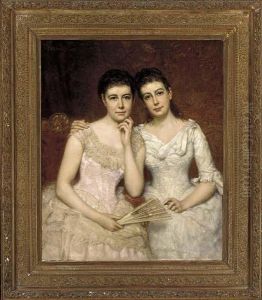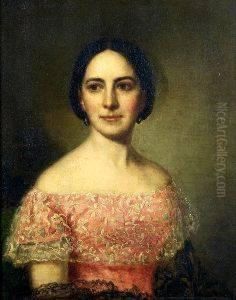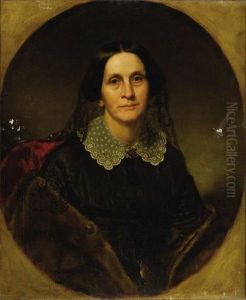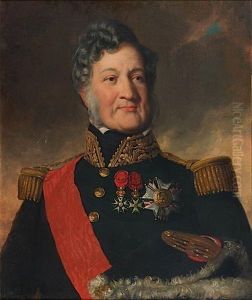George Peter Alex. Healy Paintings
George Peter Alexander Healy was a renowned American portrait painter whose prolific career spanned over half a century, during which he captured the likenesses of many of the most prominent figures of his time, including presidents, kings, and intellectuals. Born in Boston, Massachusetts, on July 15, 1813, Healy was one of five children in a family of Irish immigrants. Despite the financial struggles his family faced, Healy's talent in art was recognized and nurtured from a young age.
Healy's pursuit of art took a decisive turn when, at the age of 18, he traveled to Europe to study. He spent significant time in Paris, studying under French painter Antoine-Jean Gros, and in Rome, absorbing the classical and Renaissance masterpieces. This European education not only refined Healy's technical skills but also expanded his artistic vision, laying the groundwork for his future success.
Healy's career was marked by his remarkable ability to capture the personality and essence of his sitters. His portraits were known for their realism, psychological depth, and attention to detail. Over his career, Healy painted over 600 portraits, including those of U.S. Presidents John Quincy Adams, Martin Van Buren, Franklin Pierce, James Buchanan, Abraham Lincoln, and Ulysses S. Grant. His portrait of Lincoln, in particular, is celebrated for its portrayal of the president's strength and weariness amidst the Civil War.
Beyond his presidential commissions, Healy's subjects included international figures such as King Louis Philippe of France and Pope Pius IX, as well as American statesmen, senators, and scholars. Despite his focus on portraiture, Healy also experimented with historical and religious subjects, though these works did not gain the same acclaim as his portraits.
Healy's contributions to American art were recognized during his lifetime. He won numerous awards and honors both in the United States and Europe, and his works were exhibited widely. In 1855, he was elected a National Academician by the National Academy of Design. Despite spending much of his career in Europe, Healy maintained strong ties to the United States, ultimately returning to spend his final years in Chicago, where he continued to paint until his death on June 24, 1894.
Healy's legacy is preserved in the collections of major museums across the United States, including the Metropolitan Museum of Art, the Smithsonian American Art Museum, and the Art Institute of Chicago, among others. His work remains a vital part of the narrative of American art history, offering insight into the figures and faces that shaped the nation during a transformative period.



